Collages
„The apocalypse will not be advertised”
Creation march-april 2020
„The apocalypse will not be advertised” is a reappropriation of the painting “Le Déluge” (around 1911) by Leon Comerre with busted advertisements.



The Flood //
The flood is a well-spread image of the apocalypse, present in several mythologies and religions. The flood is a symbol of divine punishment for human misbehaviour. In various myths, a divinity is deeply disappointed by the lack of respect humans have for each other and for nature, and therefore this divinity decides to erase them with elemental force, oftentimes the force of water.
In an attempt to appropriate the narrative of divine punishment for modern reality, “the flood” is replaced with commercials. As “God is dead” (Nietzsche) and no longer the punisher, the punishments are self-inflected. As human greed and disrespect for nature undoubtedly lead to climate catastrophes, the flood appears not only as a figure but also a concrete consequence of human actions.
The Advertisements//
Advertisements have here a metonymic function: they represent the pic of the iceberg of a world based on exaggerated consumption and constant productions of needs and desires. An ideological system which produces environmental disasters and eventually floods.
Furthermore, advertisements are also chosen for their mythological function: they create beliefs of a better life outside reality and have a “divine” status: they are omnipresent in our lives, influencing our behaviour subconsciously and shaping our decisions. Their presence is visible and invisible at the same time: we don’t notice them unless we intentionally want to notice them.
The Collage //
The material nature of collage reinforces the crumbling effect: the ripped pieces of paper are themselves “destroyed pictures” which as shredded lines create an overall impression of cracking.
The process of ripping apart photoshopped faces, polished products and sleek slogans to recreate a chaos of colours and shapes, was a cathartic process for the artist. Usually a passive receptacle of these images, without any power to evade them, the artist could now appropriate them, have power over them and choose their function and place. Additionally, by dealing with the commercials so closely, the artists discovered a new layer and texture to the commercials. The quality of the paper, of the pixels, the complexity of the colour ranges etc. played a central role while the original messages were ignored.
As the collected commercials did not correspond with the original colours, the artist decided to freely interpret the colours of the original painting. The result therefore also reflects, to some extent, the current marketing trends: orange, green and blue were very pervasive colours and the predominance of white models reduced the range of “skin colours”.
„The apocalypse will not be advertised” is one of Claire’s biggest and most challenging pieces: a 6x3 metre collage made purely from pieces of printed commercials and is part of her Serie “CosmAgonia”.




Real Models instead of Top Models (2019-2021)
A tribute to female human right activists.
While most of the time women in the advertisement are depicted for their bodies nd reduced to their appearance, the series of portraits “Real model instead of top models” aim to spread another picture of women and portray inspiring women who stood against armed violence and human rights violation with their ideas, talents and voices.
By using advertisements I aim to appropriate and deconstruct invading and toxic images and transform them into portraits of heroines of our contemporary world, which are often underrepresented or even ignored.
Because there are plenty of amazing women from all the continents, which could give us mpowering role models. Because sexism is still omnipresent in the pictures we are daily confronted with. Because we don’t need heroines of the cosmetics but heroines for a better society. Because we don’t need to shave our legs to be great. Because we don’t need external validation about our physical appearance to be beautiful. Because emancipation is to sit where you want to sit, even you have to break some rules. Because women make history. Because the next generations need to know these wonderful women, who didn’t stop at the door of their house and improved our lifes.






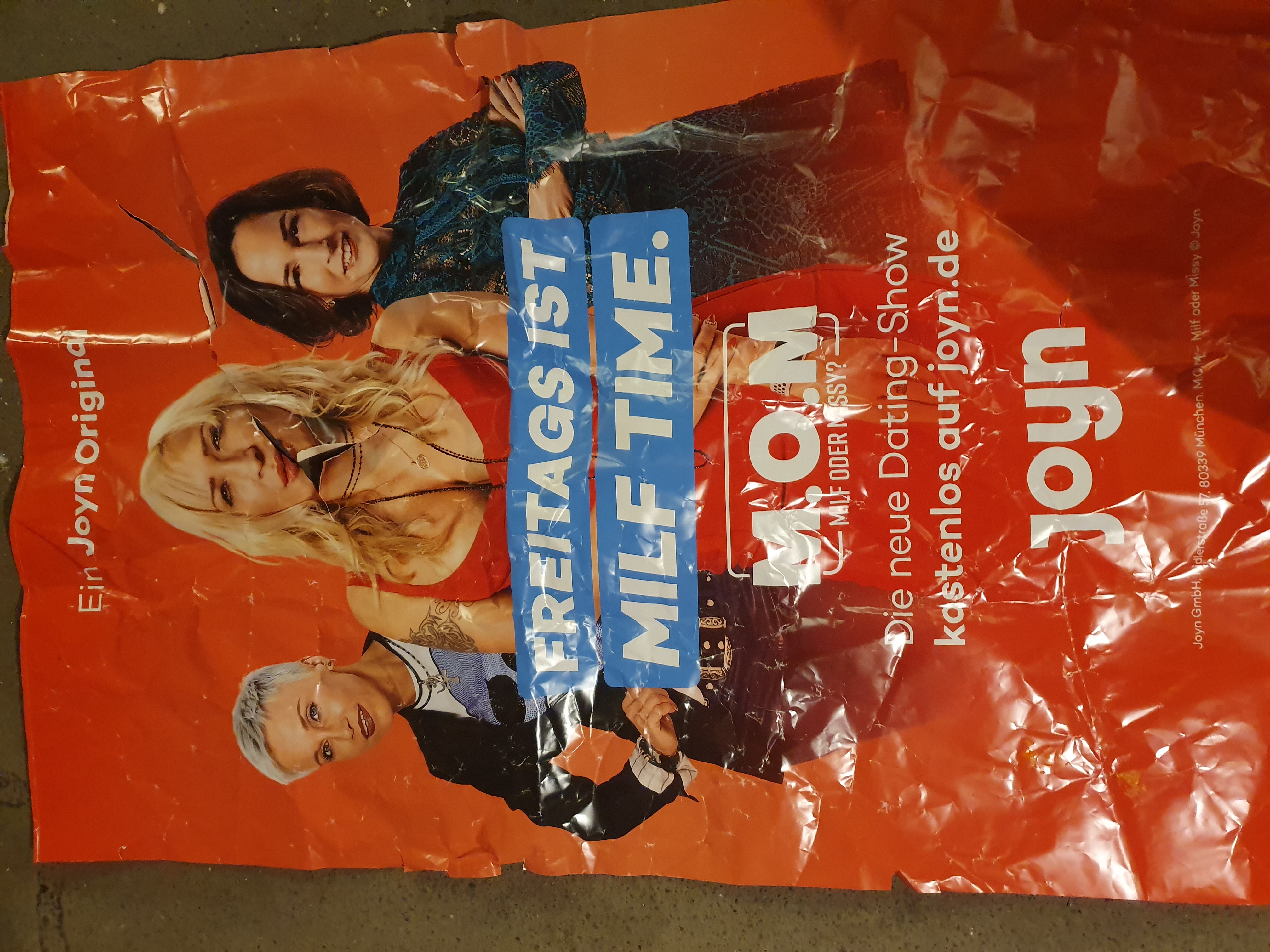





Impossible to look away (2018-2019)
The sequence of patchwork collages „Impossible to look away“ is compiled of posters collected from Berlin’s public spaces.
Insidiously and subliminally affecting commercial backgrounds are deconstructed, destroyed and rearranged to become visible art pieces that
invade the public frame. I challenge myself by using the original colors of each poster to recompose a completely new picture.
The portraits depicted in the collages are intended for their gaze: be it one that tries to escape, avoids or faces the observer, head on, with determination.
I place a human face on the visual commercial landscape to replace producst with humans.












Art Not Ads (2018)

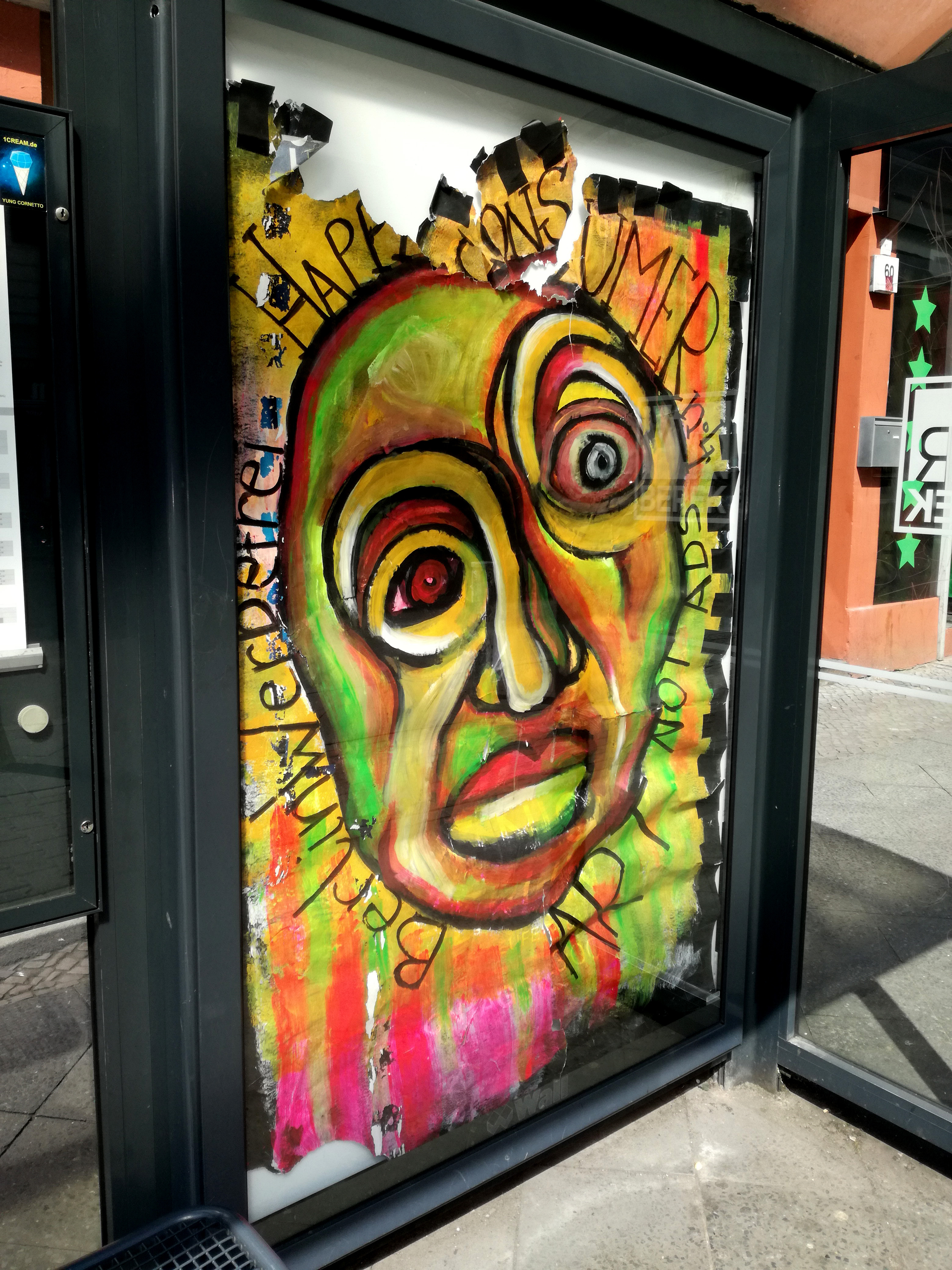



Paintings
Merci Simone!
Creation 2021

The work is an homage to Simone Iff, Simone de Beauvoir and Simone Veil. These three women fought for the right for women’s reproductive self-determination. A fundamental right which is put in question in numerous countries, like Poland or Germany. The collage memorialize the “The Manifesto of the 343” (French: Manifeste des 343), a French petition signed by 343 women "who had the courage to say, 'I've had an abortion'" published in 1971. It was an act of civil disobedience, since abortion was illegal in France, and by admitting publicly to having aborted, they exposed themselves to criminal prosecution. The manifesto called for the legalization of abortion and free access to contraception. It paved the way to the adoption, in December 1974-January 1975, of the "Veil law”.
Here a little extract of the Manifesto:(…) Free abortion on demand is: Immediately ceasing to be ashamed of your body, being free and proud in your body just as everyone up until now who has had full use of it; no longer being ashamed of being a woman. An ego broken into tiny fucking pieces, that’s what all women who have to undergo a clandestine abortion experience; just being yourself all the time, no longer having that ignoble fear of being ‘taken’, taken into a trap, being double and powerless with a sort of tumour in your belly; a thrilling fight, insofar as if I win I only begin to belong to myself and no longer to the State, to a family, to a child I do not want; a step along the path to reaching full control over the production of children. Women, like all other producers, have in fact got the absolute right to control all of their productions. This control implies a radical change in women’s mental configuration, and a no less radical change in social structures.
1. I will have a child if I want one, and no moral pressure, institution or economic imperative will compel me to do so. This is my political power. As any kind of producer, I can, while waiting for improvement, put pressure on society through my production (child strike).
2. I will have a child if I want one and if the society I will be bringing it into is suitable for me, if it will not make me a slave to that child, its nurse, its maid, its punchbag.
3. I will have a child if I want one, if society is suitable for both me and it, I am responsible for it, no risk of war, no work subject to whims. No to supervised freedom. (…)








Democracy (2015)
Oil, Acrylic
Artistania Atelier



Mascarade (2016)
The paintings are deformed portraits of masks and are part of the serie "Mascarade". The frames are made out of old windows. The unhuman face looks with curiosity to the inside of the real world.

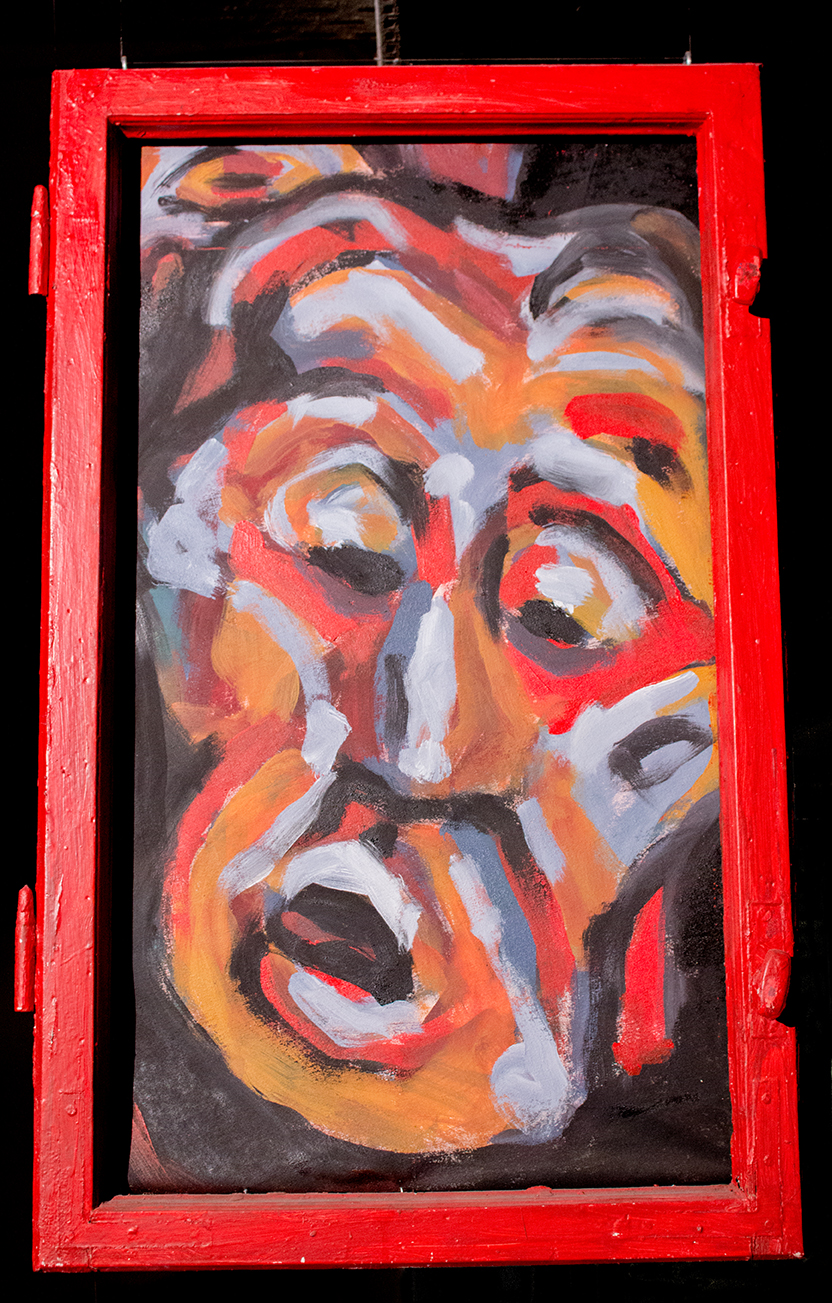


Travel books
Travel book Clandestine Palestine (2010)









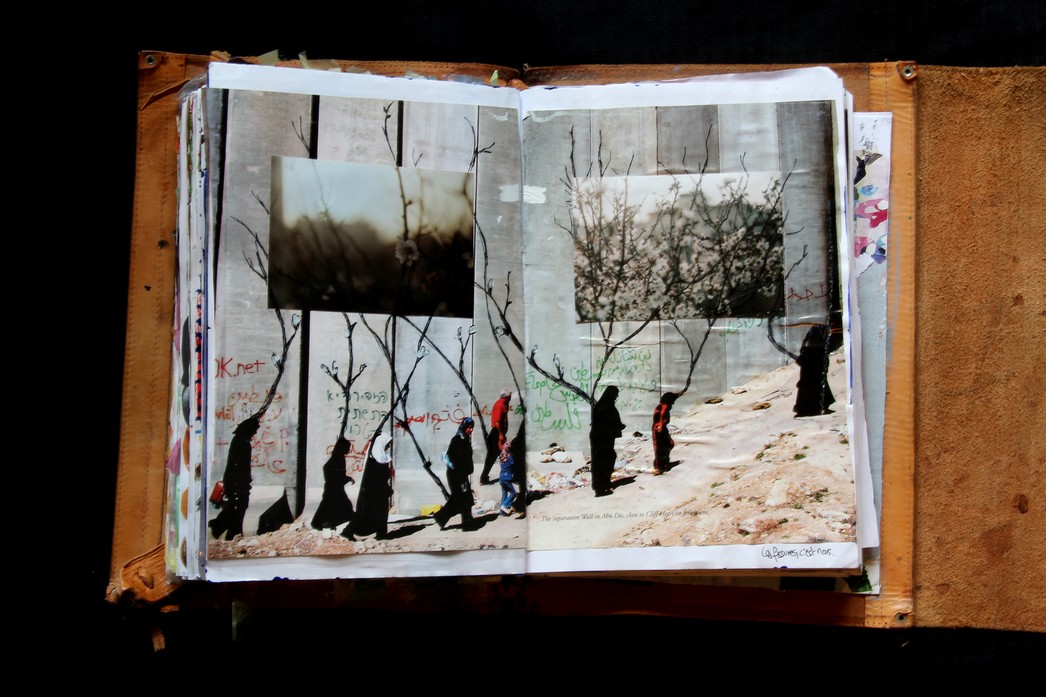
Travel book Georgia on my mind (2009)


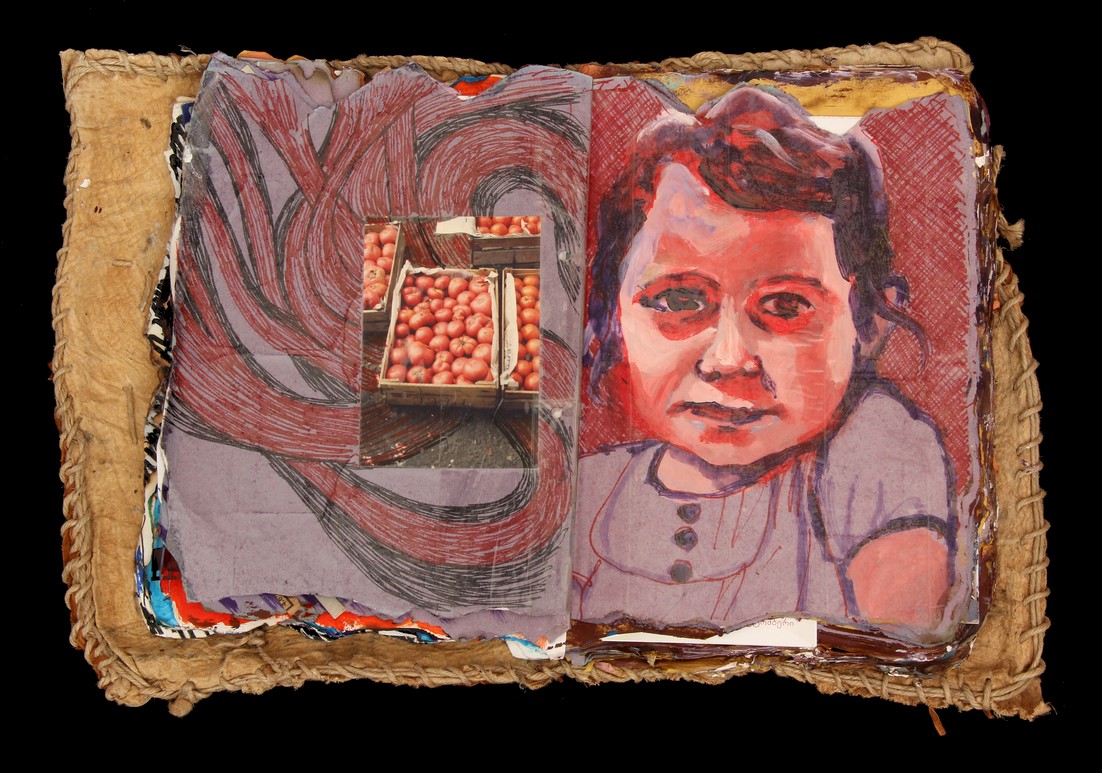
Travel book Black little Prince (2008)








Various
Kader and the bird (2013)
Acryl on cardboard
sold




Dreamers (2013)
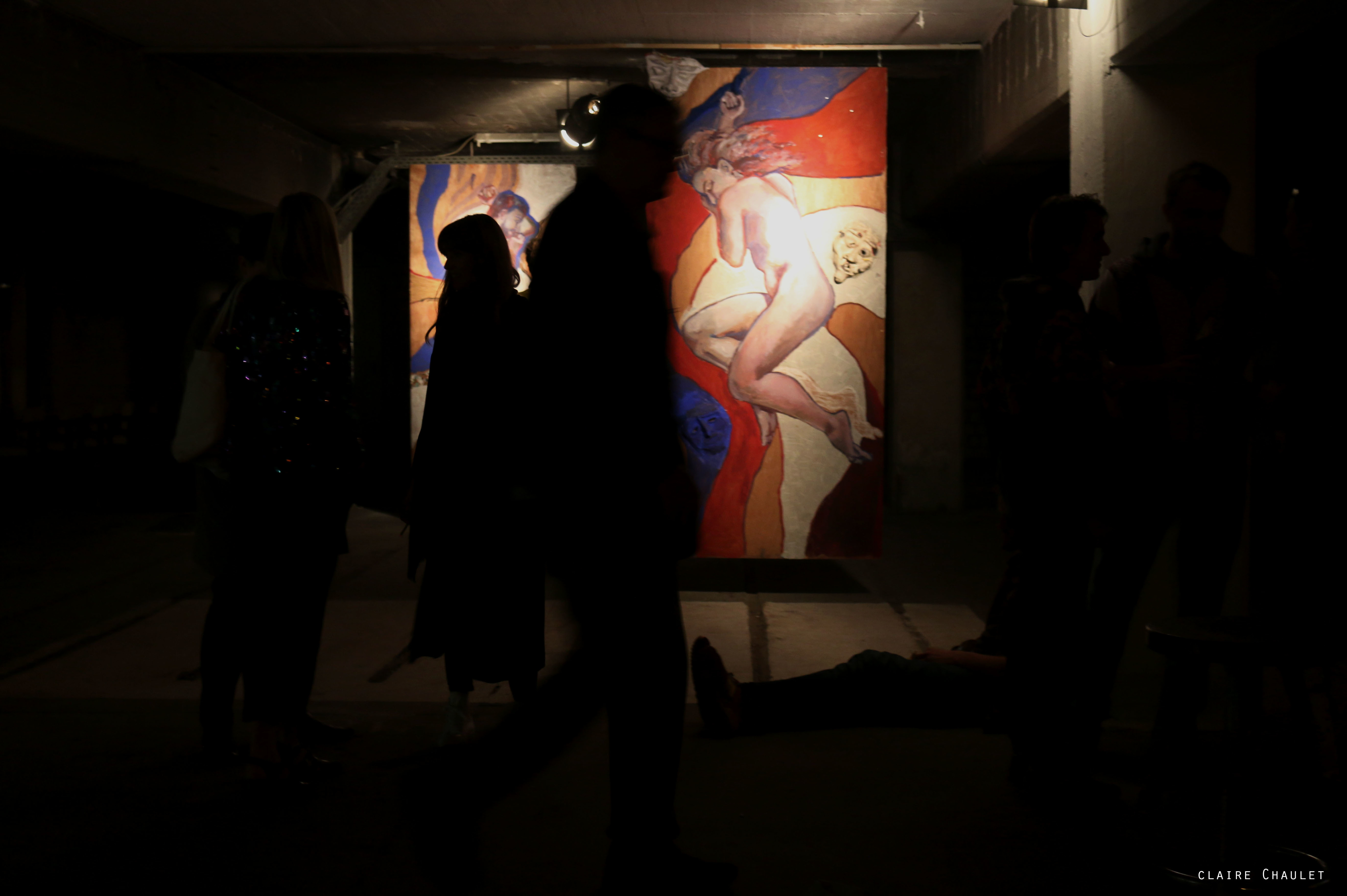

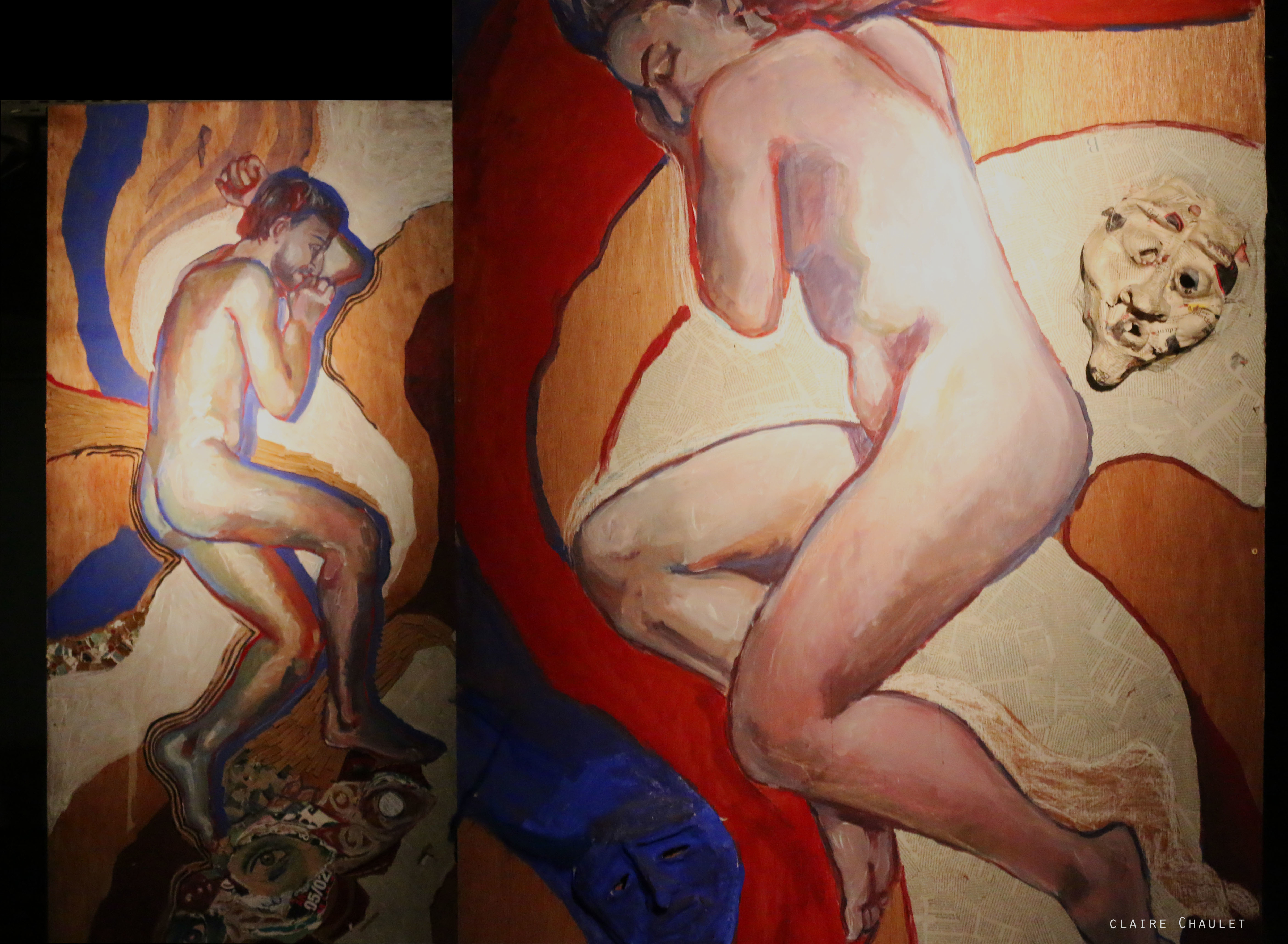
I wish I was a Musician (2017)



Women (2013)



Portraits




Installations
Museum of non-natural history // Guided tour
Installation made with Saba Tsereteli
commissioned by Borealis AG | 2018
The Installation was exhibited in the Super Studio (Milan 2018), Innovation Center (Linz 2019),
Joahnnes Kepler Universität (Linz 2020)
Dear Ladies and Gentlemen,
Welcome to observe the very latest discovery of the museum of non-natural history.
During our expedition in the Atlantic desert in summer 2056, we - me and my colleagues from the research department - had the chance to discover the remains of a very special aquatic craniate from the post-modern era.
The remains are disintegrating, as you can observe, but, due to the huge amount of plastic absorbed, the shape of the skeleton was conserved. As we all know plastics have this fantastic quality of durability and degrades very slowly, as their chemical structure renders them resistant to many natural processes of degradation.
Through this carcass our researchers found out more about the post-modern era, which in scientific terms is called “petrolithic”, due to the obsessive use of petrol. The cruel irony of this period is that it was not the scarcity of petroleum which finally annihilated it but the unexpected popping out of nuclear waste. Until now we were not able to find out who and what was the mistake or misunderstanding behind.
Now you have to imagine the world in the time of this chordate: this world was overfed with plastic. The oceans were satiated with plastic. Wales were devouring plastic to death. The stomachs of fishes and birds were colored with plastic bags, plastic stopper, plastic particles, plastic bottles, plastic packaging. Our scientists estimate that in in the post-modern times 12 million tonnes of plastics were leaking into the ocean every year. Unimaginable for us, isn’t it?
At that time, you have to know, plastic was not a valuable and rare good as it is today. It was so common that humans even used it only once. They called it “single use plastic”. This is not a fictive story: what you can see inside this fish is exactly this extravagant use of plastic of this era. It’s not for nothing that we call the humans of this era “Homo plasticus”.
But now look at these insects: aren’t they remarkable? To let you know: they are not real, it’s a realistic reconstitution of these insects of former times. Scientists used genetically modified peanuts to reach an approximate shape of this exceptional species. This species, called 'ants', was capable of sorting, recycling and degrading plastics in a surprisingly efficient way. Some of my colleagues are even affirming that their determined effort saved mankind from the need to emigrate to Mars. Of course, this thesis is very audacious and not yet proved. Nevertheless, archives from that times show that if the ants would not have taken their task seriously, there would be today more plastic waste than animals in the world.
Let's have a closer look: these microbial communities isolated from soil samples mixed with starch have been capable of recycling polypropylene in an extraordinary way.
Ants are eusocial insects, the highest level of organisation of animal sociality. They are defined by the following characteristics: division of labour, communication between individuals, and ability to solve complex problems such as waste! Their ability to exploit resources may bring ants into higher intelligence level then humans. These ants are small and insignificant at first glimpse, but they can carry 10 - 50 times their body weight. They work together and never give up. Ants have abilities to move mountains. They have a delicate balance of individual effort and teamwork.
But as you can see in this reconstitution we didn’t yet found out the finalisation of the recycling process: the mystery remains, how these brave creatures managed to bring mountains of wasted plastic into the new circularity, which we know nowadays.
As part of the tour you have now the chance to visit the archeological reconstitution department and create your own portable ant, as a symbol of micro-heroism.
Photos by David Rudolf




Wave of Changes (2019)
Installation made with Saba Tsereteli
commissioned by Borealis AG | 2018
Plastic, plaster
250 cm* 300 cm* 400 cm
The first exhibition of ‘Wave of Change’ took place in 2019 at Langen Foundation, Museum in Neuss.
This installation is an invitation for reflection on the relationship between the ecognition of the collective environmental catastrophe and the effective measures taken to confront the matter.
‘Wave of Change’ has a continuous character of expansion: it evolves through the interest it creates. The number of hands in the installation increases by the changing waves of development, progress and sometimes regress of response by global leaders on the issue of environmental justice.